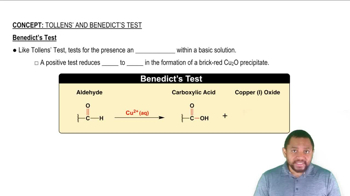Use the Fischer projection for D-gulose in problem 13.69 to answer each of the following:
b. Draw the Fischer projection and name the product formed by the oxidation of D-gulose.
 Verified step by step guidance
Verified step by step guidance Verified video answer for a similar problem:
Verified video answer for a similar problem:



 1:47m
1:47mMaster Oxidation of Monosaccharides Concept 1 with a bite sized video explanation from Jules
Start learning